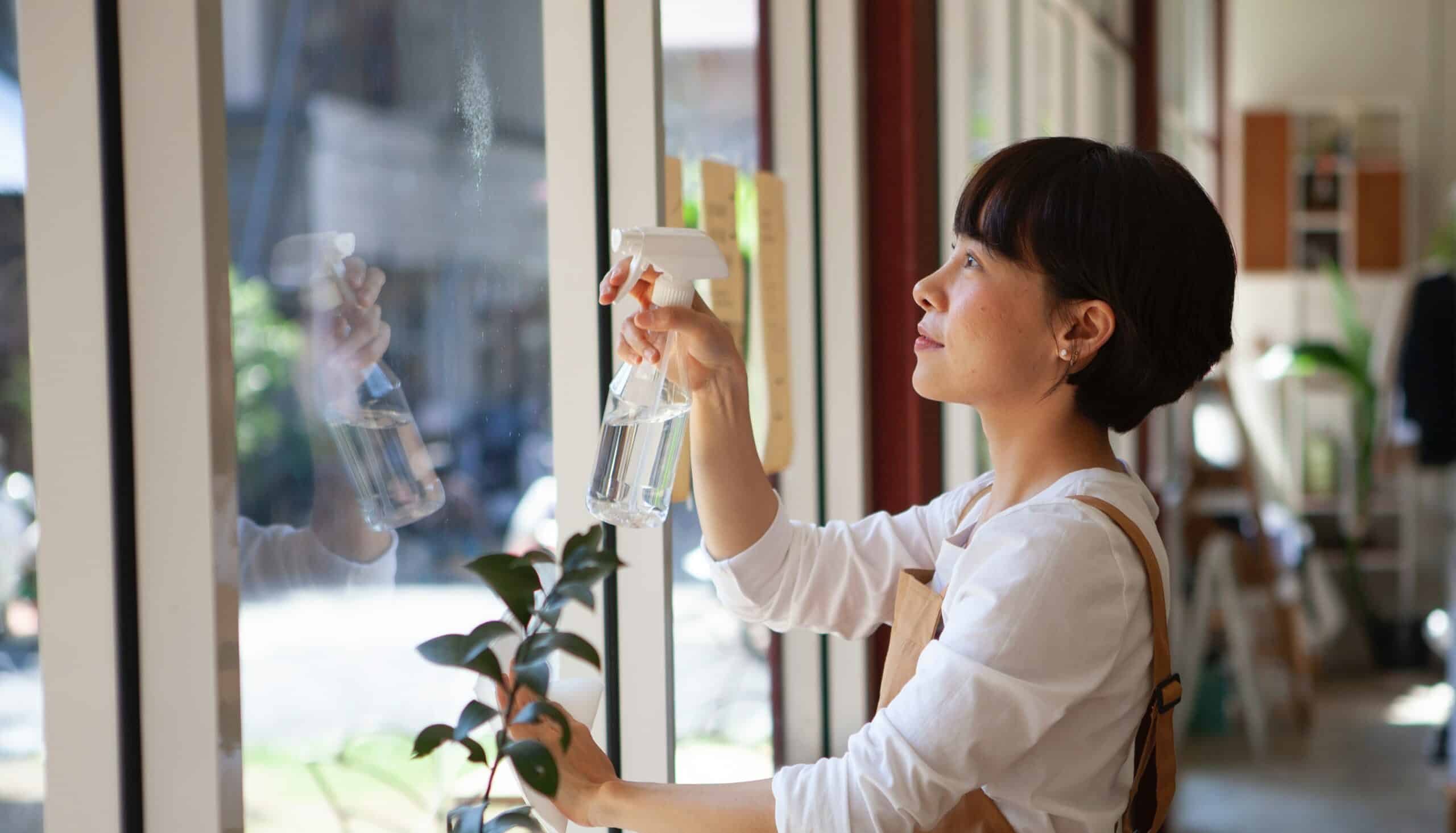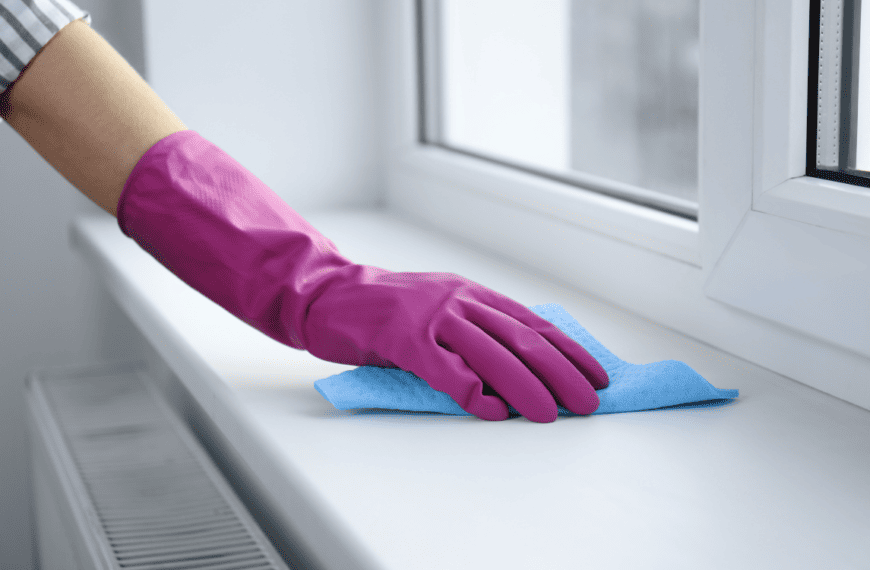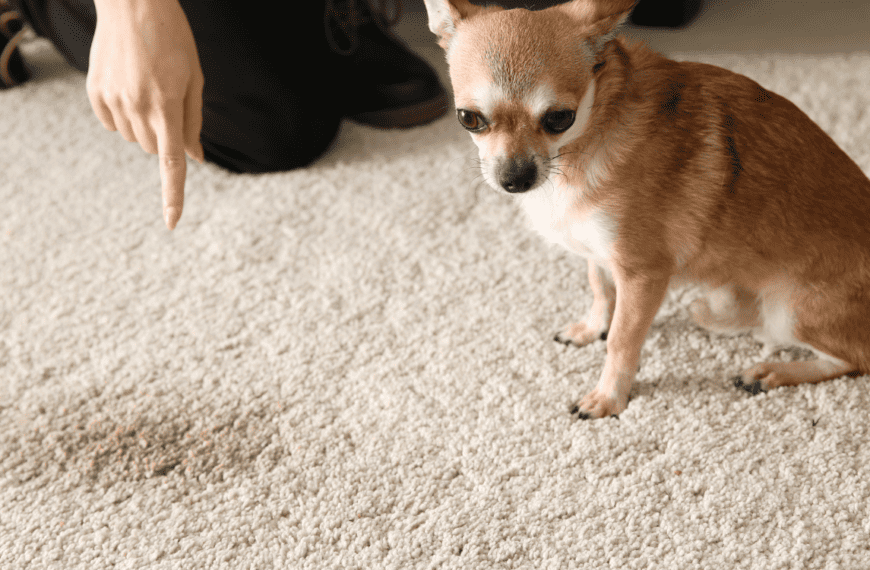The best cleaners are safe, inexpensive, and effective, which might explain our love for DIY options like baking soda and vinegar. Yet, with all of our discussions on using vinegar for cleaning, it’s surprising to think that we’ve only touched the tip of the iceberg.
Distilled white vinegar is an all-purpose miracle cleaner, but there’s a vast array of vinegars beyond it. Many may be brand new to you because they never appear in grocery stores. If you reach for vinegar to clean the many messes around your home, some could even be a game-changing addition to your household cleaning closet.
Why Is Vinegar A Good Cleaner?
Vinegar is made when alcohol undergoes a second fermentation with bacteria that converts it to acetic acid. Fermenting different alcohol results in the assorted vinegar varieties we use for cooking and cleaning around the house.
Acidity levels vary among the different types of vinegar. The FDA requires vinegar to consist of at least 4 percent acetic acid to fit the definition. Some cooking varieties go up to 8 percent concentration. Specialty vinegar can exceed 10 percent acetic acid concentration, but these varieties are not ideal for use in food.
Acetic acid makes vinegar an effective cleaner. It lifts dirt, dissolves hard water deposits and soap scum, and loosens tough grime. Unlike most commercial cleaning products, vinegar is powerful yet presents few safety concerns. Plus, its biodegradability means it won’t harm the environment.
Is Vinegar a Natural Disinfectant?
Of course, the big question with our favorite natural cleaner is: Does vinegar kill germs? Removing stuck-on gunk and stubborn stains is excellent. But a food-safe product that eliminates microbes is a rare find and an enormous benefit in a house with children and pets.
Vinegar can kill or reduce some of the more common bacteria in the kitchen, including salmonella, E. coli, and listeria. Studies have also found that vinegar with relatively high acidity levels can combat the flu and kill mycobacteria. In the bathroom, you can use vinegar to clean mold and mildew.
Despite these benefits, vinegar is not an EPA-registered disinfectant. The EPA doesn’t test the effectiveness of household ingredients against pathogens. Vinegar does not work against most bacterial and viral threats, including coronavirus. If your main goal is disinfection, opt for an EPA-registered product, and save the vinegar for multi-purpose cleaning.
Distilled White Vinegar
Distilled white vinegar is the most common household type of vinegar. Ethanol from corn (clear grain alcohol) is the base. The white distilled vinegar we typically use for cooking and pickling contains 5 percent acetic acid and 95 percent water.
Apple Cider Vinegar
Another popular kitchen staple is apple cider vinegar. Apple cider vinegar is made from fermented apples or apple juices that provide its distinct brown coloration. It has countless cooking uses and is an excellent foundation for adding herbs and spices. Some ACVs have slightly more acetic acid than white vinegar, ranging from 6 to 8 percent.
Apple cider vinegar offers unique health benefits. Organic apple cider vinegar helps reduce bloating and stomach acid reflux and detoxifies the body. A daily habit of drinking a glass of water with 1–2 teaspoons of apple cider vinegar can give your digestive system a notable boost.
Balsamic Vinegar
Rich, dark brown, and sporting hints of sweetness, balsamic vinegar is a favorite for numerous salad dressings, stews, sauces, and marinades. The primary ingredient in traditional balsamic vinegar is “grape must” (freshly pressed grape juice), which undergoes fermentation and acidification to become vinegar. Balsamic vinegar typically contains 6–7 percent acetic acid.
Rice Wine Vinegar
Rice wine vinegar, or rice vinegar, is the result of fermented rice sugars and starches that follow a second fermentation to produce acetic acid. Asian dishes commonly utilize rice vinegar, with Chinese, Korean, and Japanese cultures relying on it for pickling and flavoring sauces and marinades. The acetic acid concentration is usually 5 percent.
Red or White Wine Vinegar
Red and white wine vinegar are products of fermented wines that give cooked dishes a touch of fruity sweetness alongside the acidity. They’re generally milder than distilled white vinegar but feature a similar 5 percent acidity level. White wine vinegar is a go-to for making herbal vinegar.
Malt Vinegar
Malt vinegar comes from malted barley grains used to make beer. It’s a popular topping for English fish and chips but also appears in recipes for pickled vegetables, chutneys, and glazes. It ranges from light to dark brown and contains 5–10 percent acetic acid. A 10 percent malt vinegar was used in the study that found vinegar effective against influenza.
Sherry Vinegar
Sherry vinegar is a relatively expensive Spanish vinegar made from sherry. It makes an exceptional addition to sauces, vinaigrettes, and marinades, with many expert chefs finding it preferable to balsamic. The flavor is complex, offering caramel and nutty notes against a pleasant acidity. Aged sherry vinegar is required to consist of at least 7 percent acidity.
Cleaning Vinegar
There isn’t much difference between cleaning vinegar and the different types of cooking vinegar in terms of acidity. Diluted cleaning vinegar typically contains 6 percent acid. Some brands even market their products as safe for cooking. Cleaning vinegar is often cheaper than distilled white vinegar, though it may contain more impurities.
Industrial Vinegar
Industrial vinegar is available at home improvement or lawn and garden stores. Acid concentration ranges from 20 to 75 percent. Most brands offer guidelines for diluting their products to suit various cleaning and horticultural applications.
Industrial types of vinegar are hazardous. They can be poisonous when ingested and corrosive to the skin. It’s crucial to use appropriate equipment when handling these substances and work in a well-ventilated environment to avoid inhaling the vinegar fumes.
Can You Use Cooking Vinegar for Cleaning?
You can often use cooking vinegar for cleaning. But you’ll rarely be able to use cleaning or industrial vinegar for cooking. Cooking vinegar contains enough acetic acid to dissolve tough stains and loosen grunge. Dark-colored vinegar, such as balsamic or red wine vinegar, is often less suitable due to its ability to stain light-colored surfaces and fabrics.
Which Type of Vinegar Is Best for Cleaning?
Cleaning and industrial vinegar provide the best value for strictly cleaning purposes if you aren’t using your vinegar cleaner around children or pets. You can use more water to dilute a heavily concentrated industrial vinegar, letting you make more cleaning solution with less vinegar.
Despite their value in cleaning, industrial and cleaning vinegar often aren’t the best investment for most people. They have no cooking benefits, and you must treat them like toxic chemical cleaners around children and pets. Unless you use a lot of vinegar for cleaning and gardening, there’s a much better option to keep on hand.
For average homeowners, distilled white vinegar is the best vinegar for cleaning around the house. The 5 percent acidity is powerful enough to cut through tough grime and dirt but presents few health concerns. While other cooking wines share a similar acid concentration, white vinegar is cheaper and unlikely to stain as you clean light-colored surfaces or fabrics.
Vinegar in the Kitchen
One of the best uses for vinegar is in all-purpose sprays. Create a mixture of equal parts vinegar and water in a spray bottle to make effective multi-purpose cleaners for kitchen counters, sinks, and appliances.
Although the vinegar smell typically dissipates in about an hour, you can include 2–3 drops of essential oil to mask the odor. For a little extra cleaning power, add a few drops of dishwashing liquid to the solution.
Try these additional tips for cleaning with vinegar in the kitchen:
- Microwave a bowl of ¼ cup white vinegar mixed with 1 cup water to loosen grime on the interior
- Use baking soda and white vinegar for safe and effective oven cleaning
- Descale coffee machines and pots by running diluted vinegar through them
Do not use vinegar on natural stone countertops, wood surfaces, or cast iron because the acidity will eat away at them. The same is true for hardwood floors, natural stone floors, and unsealed grout on ceramic tile. Vinegar is an excellent cleaner for no-wax linoleum but will likely dull and degrade the finish on most types of flooring.
Vinegar in the Laundry
Get rid of odors and stains in the laundry with vinegar. Pour ½ cup of undiluted white vinegar into the machine during the wash cycle to brighten your clothes.
Vinegar in the Bathroom
The acidic properties of white vinegar allow it to break up soap scum, shine surfaces, and destroy mildew. Try these clever ideas for cleaning around the bathroom:
- Pour 2 cups of undiluted vinegar into the toilet bowl to deodorize and remove rings
- Make a DIY glass cleaner for shower doors and other glass surfaces
- Mix vinegar and baking soda to clear stuck or slow-running drains
Vinegar in the Garden
One of the best uses for industrial vinegar is as a weed control measure. But undiluted cleaning vinegar and even regular old distilled white vinegar can also destroy unwanted plants, especially when you catch them early. Mix undiluted cleaning vinegar or white vinegar with a tablespoon of dish liquid in a spray bottle and douse young weeds to kill them off.
Can I Use Apple Cider Vinegar Instead of White Vinegar for Cleaning?
Apple cider vinegar is a viable substitute for white distilled vinegar as a cleaning agent. It’s the best vinegar in a pinch to make multi-purpose cleaners when you’re out of white vinegar, but it’s an impractical primary choice. Apple cider vinegar can leave stains on some materials and is more expensive than distilled white vinegar.
Use Vinegar to Clean Around Your Home!
Who knew there were so many different types of vinegar for cleaning? Distilled white vinegar is the best for household cleaning and arguably the most versatile. But it’s comforting to know there’s a world of concentrated cleaning and industrial varieties to try next if you rely on vinegar and wish you had something more powerful.
Understanding the different types of vinegar is essential in making life easy around the house. But it’s equally critical to know when to call in help. If it’s impossible to find the time or patience to tackle your cleaning chores, take a few seconds to schedule a custom cleaning with Anita’s.
If you live in Santa Cruz County, San Diego County, Santa Clara County, Monterey County, Los Angeles County, or Riverside County, we will match you with a local, professional house cleaner based on your needs, budget, and schedule.
Request a booking today, and we’ll connect you with local experts to fit your unique needs!









